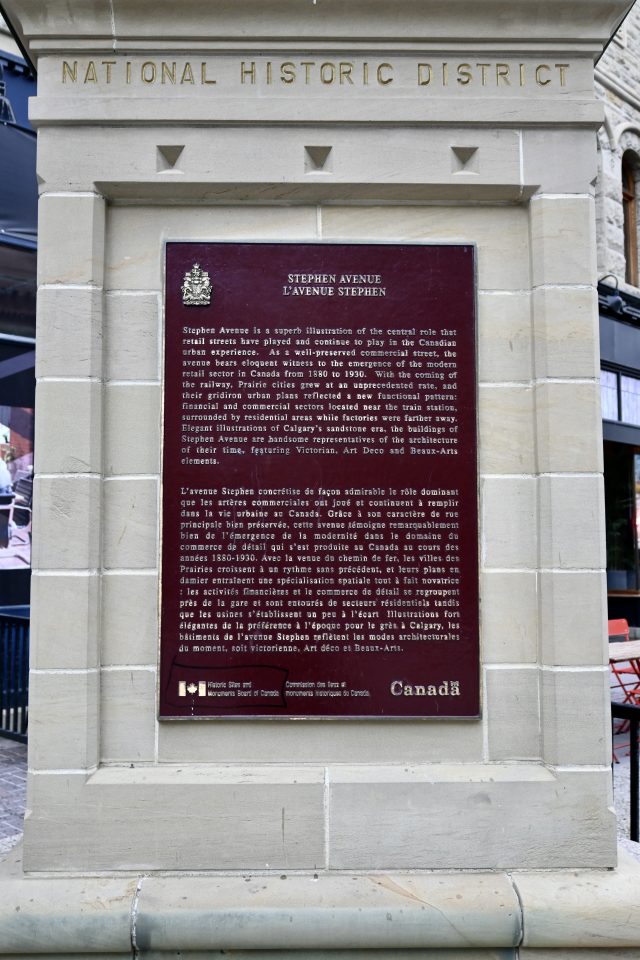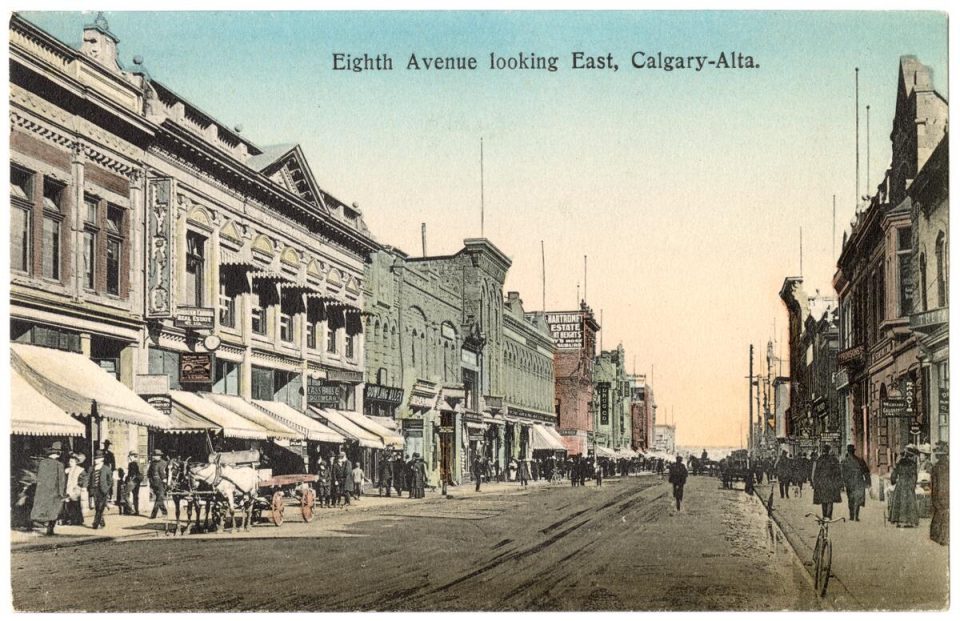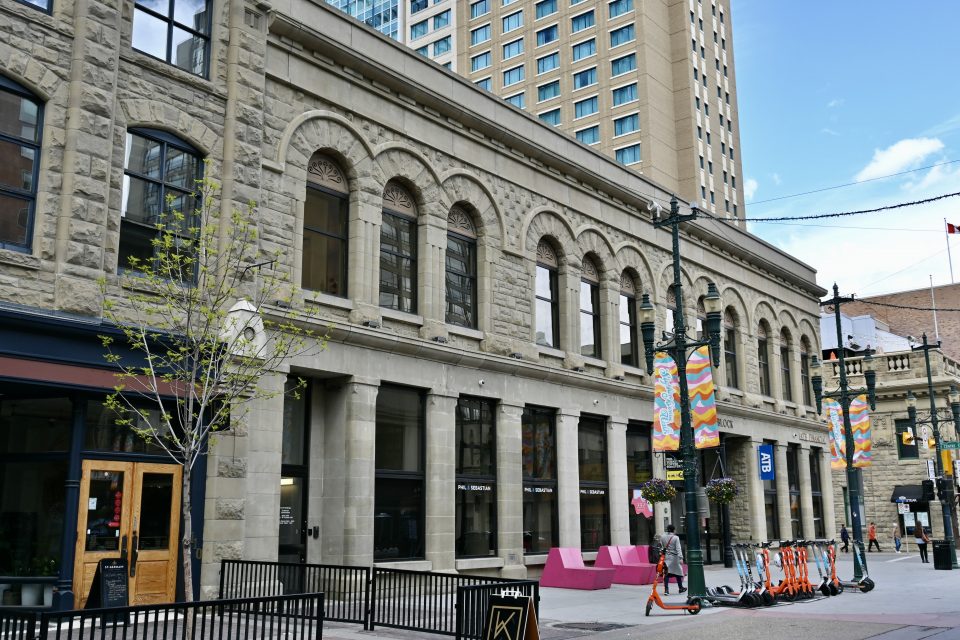By Karen Paul, Director of the Calgary Heritage Initiative Society and Contributor to Heritage Inspires YYC
Stephen Avenue, Calgary’s heart, stretches from historic City Hall (1911) along 8 Ave SW and past the Barron Building (1951), Calgary’s first skyscraper that established us as the Oil Capital. Now a National Historic Site, the many historic buildings on what is really Calgary’s Main Street continue to serve their original purpose.
The avenue was named after banker George Stephen. Stephen was the financial driver behind the creation of the Canadian Pacific Railway and its first president, serving until 1888.
Typical of prairie towns, Calgary’s commercial streets developed close to rivers and railways, with the downtown flanked by the Bow River to the north and the CPR to the south. When a fire wiped out the early wooden structures in 1886, the City passed a law that all public buildings be made of brick or locally quarried sandstone. In 1913, the current Hudson’s Bay store opened, cementing Stephen Avenue as the city’s shopping mecca. The Calgary Tower (1968), the pedestrian mall (1972), municipal building (1985), and Olympic Plaza (1988) ushered in a new era of public use.
Over 100 historic buildings still exist in the Core with a significant, continuous cluster between Centre and 1 St SW, fronting 8 and 7 Ave. Sadly, our ill-fated reputation as a city that tears down its heritage to build bigger and newer has put many of these buildings, and the vibrant character of Stephen Avenue, at risk. Our heritage buildings attract tourism, support local businesses and the burgeoning film industry, provide a pleasant atmosphere for a growing population, and connect us to our storied past.
Did you know that the now at-risk sandstone building with arched windows at 102 8 Ave SW was once a Hudson’s Bay department store? Built in 1891, it predates the existing and much larger Bay, one block west. Winnipeg recently announced that its landmark downtown Hudson’s Bay store will become a centre for Indigenous reconciliation, transformed into affordable housing, a museum, an art gallery, and restaurants. Calgary can do better conserving and repurposing our dwindling heritage.










